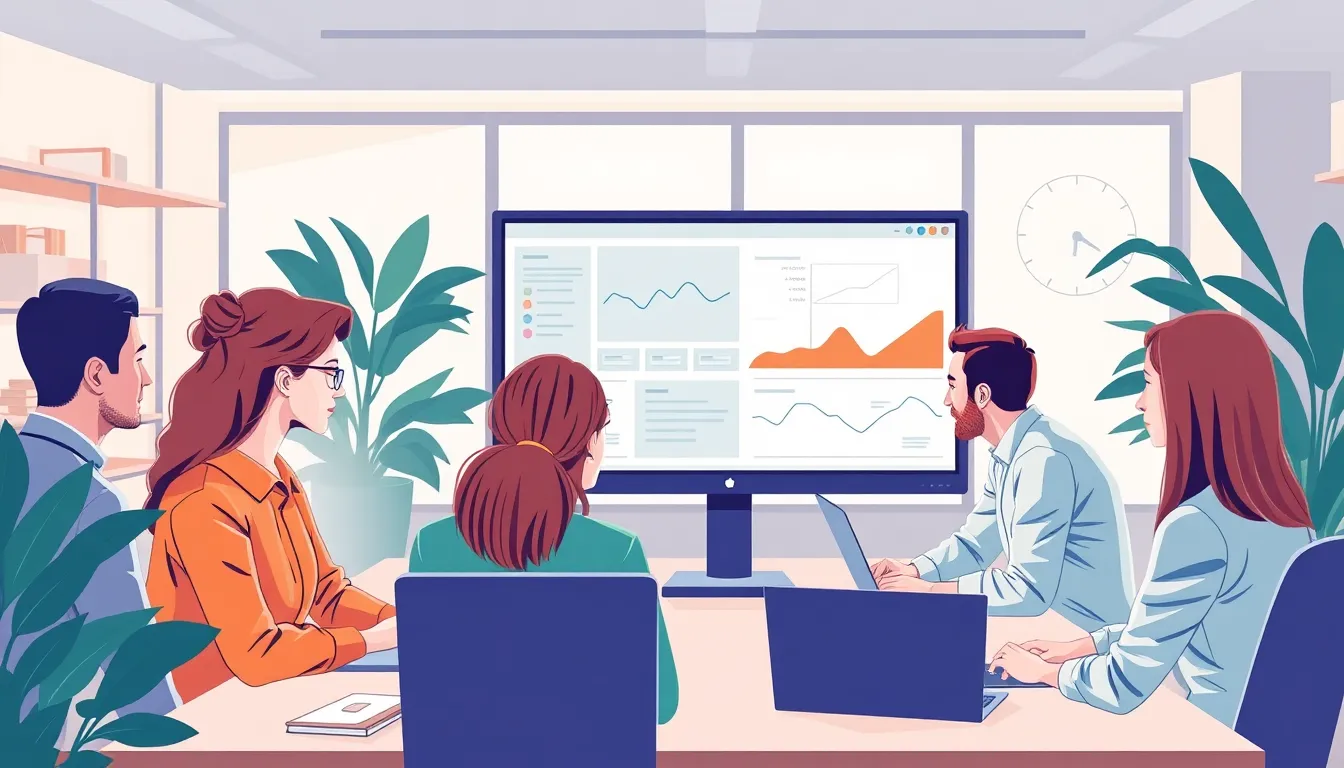In the fast-paced world of technology, Software as a Service (SaaS) architecture stands out like a superhero in a sea of ordinary applications. It’s not just a buzzword; it’s the backbone of modern software delivery. Imagine accessing powerful applications without the hassle of installation or maintenance—sounds like magic, right? Well, it’s all thanks to SaaS architecture, which combines innovation with convenience.
Table of Contents
ToggleOverview of SaaS Architecture
SaaS architecture stands as a key component of cloud computing. This model enables users to access software applications over the internet, eliminating the need for local installation. Companies deliver these applications via a distributed architecture, which enhances scalability and performance.
Multi-tenancy represents a hallmark feature of SaaS architecture. This approach allows a single instance of a software application to serve multiple clients simultaneously. Consequently, resources are used more efficiently, ensuring cost-effectiveness for providers and users alike.
Microservices play a critical role in SaaS design. This architectural style breaks applications into smaller, independent services, promoting flexibility and rapid deployment. Each microservice handles specific functions, making it easier to maintain and scale.
Data storage and management within SaaS frameworks is centralized. Providers typically use large data centers to store user data securely. This model enhances accessibility and supports robust disaster recovery solutions.
APIs facilitate communication between SaaS applications and other services. They allow seamless integration with existing systems and enable users to leverage third-party tools. This connectivity expands the capabilities of SaaS offerings, enhancing functionality.
Security remains a priority in SaaS architecture. Providers implement various measures, including encryption and regular security audits. Clients can focus on using the software while leaving security concerns to the experts.
Overall, SaaS architecture continues to evolve, driving innovation in software delivery. Enhanced user experiences, cost savings, and operational improvements keep it at the forefront of technological advancements. Organizations adopt this model for its versatility, ease of use, and ability to adapt to changing needs.
Key Components of SaaS Architecture

SaaS architecture consists of several key components that contribute to its efficiency and effectiveness. Each component plays a crucial role in delivering seamless user experiences and ensuring application performance.
Frontend Development
Frontend development in SaaS focuses on creating user interfaces that are intuitive and responsive. A powerful frontend enhances user engagement by facilitating interactions with the application. Technologies like HTML, CSS, and JavaScript are commonly used in this area. Frameworks such as React and Angular provide dynamic capabilities, ensuring that applications are not just functional but also visually appealing. Developers prioritize user experience, making sure that navigation remains smooth and intuitive for all users. Accessibility features are also integrated to cater to a diverse audience, ensuring inclusivity within the software.
Backend Development
Backend development serves as the backbone of SaaS applications, managing business logic and server-side operations. It typically involves programming languages like Python, Ruby, or Java, which handle data processing and application functionality. APIs play a vital role in enabling communication between different services and integrating third-party tools. Scalability is crucial; robust backend systems can efficiently handle increased loads and user demands. Cloud platforms like AWS and Azure offer infrastructure that supports secure and flexible backend solutions. Developers focus on optimizing performance and maintaining uptime to deliver uninterrupted service.
Database Management
Database management in SaaS is essential for storing and retrieving user data efficiently. Common database systems include MySQL, PostgreSQL, and NoSQL options like MongoDB, catering to various data storage needs. Multi-tenancy structures allow a single database to serve multiple clients while keeping data secure and separate. Regular backups and data replication strategies protect against data loss and support disaster recovery efforts. Security measures, including encryption and access controls, ensure that sensitive information remains safeguarded. Effective database management contributes significantly to application performance and user satisfaction.
Benefits of SaaS Architecture
SaaS architecture offers numerous advantages that enhance software delivery and user experience. Organizations experience significant improvements in several key areas.
Cost Efficiency
Cost efficiency stands out as a primary benefit of SaaS architecture. By utilizing a subscription-based model, businesses reduce upfront investments in hardware and software licenses. This approach eliminates expenses related to installation and ongoing maintenance. According to recent industry data, organizations can save up to 30% in operational costs by adopting SaaS solutions. Shared resources in multi-tenant environments further promote cost savings, as companies only pay for what they use. Reduced IT overhead allows teams to allocate resources more effectively, driving overall budget optimization.
Scalability
Scalability plays a critical role in the effectiveness of SaaS architecture. Organizations can easily adjust their software resources in response to changing demands. Increased user activity or the addition of new features does not require significant infrastructure adjustments. Providers typically offer flexible plans, enabling clients to scale up or down as needed without disruption. Market research shows that companies experience up to 80% faster scalability with SaaS compared to traditional software. This adaptability fosters growth, ensuring that organizations can meet emerging challenges swiftly.
Accessibility
Accessibility is another significant advantage of SaaS architecture. Users can access applications from any location with internet connectivity, promoting remote work and collaboration. This ease of access streamlines workflows, enhancing productivity across teams. Furthermore, multi-device compatibility allows users to interact with applications on smartphones, tablets, or laptops. Organizations increasingly recognize that accessible software supports a diverse workforce. Studies indicate that more than 70% of employees report increased satisfaction when using SaaS solutions, highlighting the importance of accessibility in modern work environments.
Challenges in SaaS Architecture
SaaS architecture faces notable challenges that affect its performance and user experience. Security remains a significant concern for organizations. Sensitive data stored in the cloud can attract potential threats. SaaS providers must implement advanced security measures, like encryption and regular audits. An estimated 90% of businesses prioritize data protection, reflecting the essential focus on safeguarding customer information.
Downtime and reliability also pose challenges in SaaS environments. Users expect constant availability, and even short outages can lead to lost productivity. Research indicates that 98% of organizations experience annual downtime. To mitigate risks, providers invest in robust infrastructure and backup systems, yet no system is entirely foolproof. Continuous monitoring and proactive maintenance play key roles in ensuring reliability.
SaaS architecture is reshaping how software is delivered and consumed. Its advantages in cost efficiency scalability and accessibility make it an attractive option for businesses of all sizes. As organizations increasingly embrace remote work and digital transformation the importance of a robust SaaS framework becomes even clearer.
With a focus on security and reliability SaaS providers are continuously enhancing their offerings to meet evolving user needs. The integration of microservices and centralized data management further strengthens the architecture allowing for greater flexibility and performance.
As this model continues to mature it’s evident that SaaS architecture will play a pivotal role in the future of software development and deployment. Organizations that leverage its capabilities will likely find themselves better equipped to navigate the challenges of an ever-changing technological landscape.





